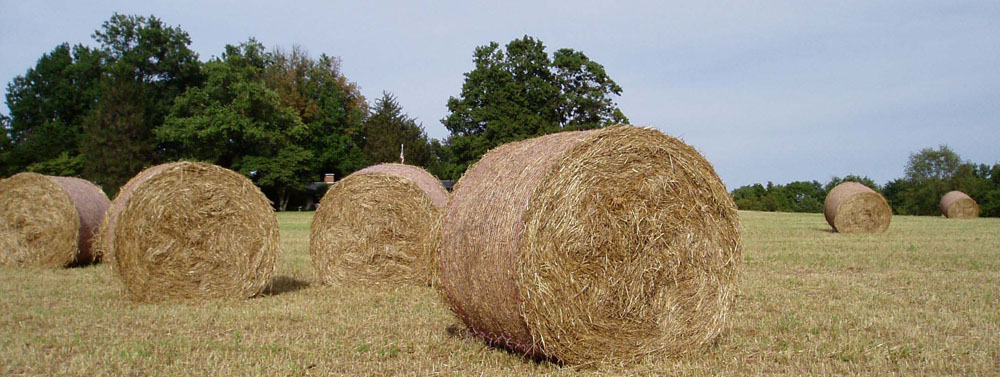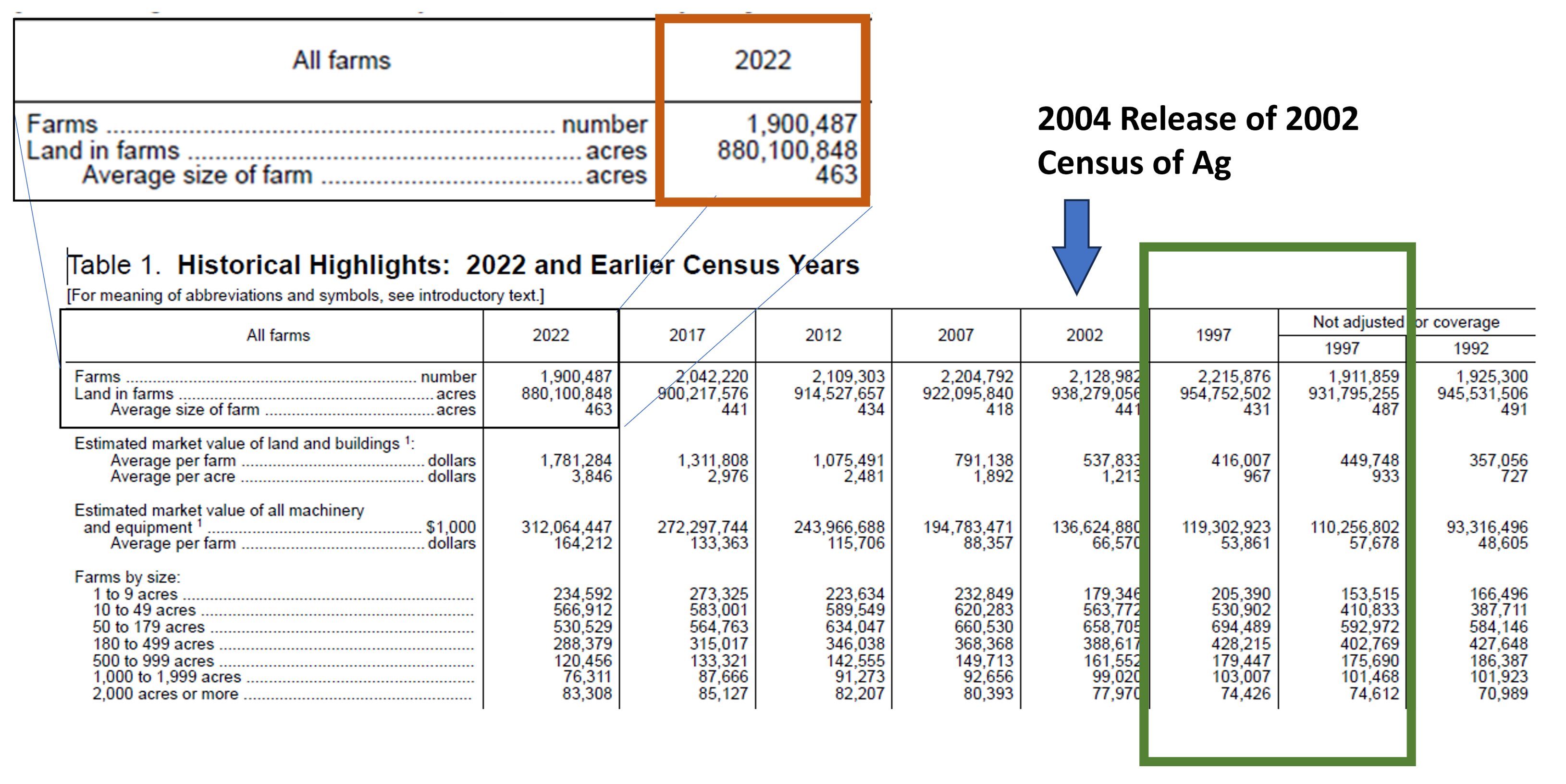Shaping Ag Data by Showing Up When Cool Things Happen
The 2022 Census of Agriculture was released on February 13, 2024. This image is the top of the first table, Table 1, in the 750-page data document on summary data in the United States for the production year, 2022. In the first 3 lines, history is made. The current tally of U.S. farms is 1,900,487 farms, which is the lowest number in 150 years (since 1870). Land in Farms is lower than it has been more recently. And for the 1.9 million farms the average farm size is 463 acres per farm, which is the largest farm size in 20 years, but about where farm size has been for 50 years.
Twenty years ago, I was a happy farm data nerd, who had the privilege of representing the farm producers on behalf of the American Farm Bureau Federation on the federal agricultural statistics advisory committee. That year in 2004, I had the double bonus of having been elected Chair of the committee. I had spent 10 years on the advisory committee and behind the scenes I had quietly battled and carried farmer interests forward with the leaders of USDA, National Agriculture Statistic Service (NASS). My term was up, so I was soaking up the time spent working through two Census cycles. We leaned on each other a lot (industry and the federal data professionals). It was a bit surreal, because few in my own organization realized the scope of the good that was being done.
Before the 2004 Committee Meeting, it was not clear that we would change the future of agriculture. As the 1997 Census of Agriculture was being released (1999), the administration of this Census was transferred from the Census Bureau in the Commerce Department, to USDA. The 2002 Census of Agriculture, released in 2004, was the first Census of Agriculture conducted completely by USDA. The National Ag Statistics Service are the data collectors for USDA and other federal agencies. They know how to get the most representative data. The 2004 Agricultural Statistics Advisory Committee endorsed NASS using all their data sets to make sure the Census data was the closest reflection of reality in U.S. farm production. Before the shift to USDA, the Census Bureau did not have access to the same farm data toolbox.
The USDA, 2002 Census of Agriculture used the annually collected farm data to strengthen the data published in the Census of Agriculture, mostly to fill in gaps in the collection of data purely from the Census process. The 1997 Census data is published in both the original Commerce Department methodology and also the newer USDA data methodology.
The 2022 Census had a response rate of 61 percent. While that is more than half, it has historically been much higher. Census methodology is published with every census and is highly transparent. I believe the quality of the 2022 is the highest possible. NASS employees take great pride in delivery the best reflection of farm data while protecting the data providers (farmers and farm families).
The professionals at USDA, NASS are the best. Great job everyone. I am glad to have been part of making farm data the best.



Comments
Shaping Ag Data by Showing Up When Cool Things Happen — No Comments
HTML tags allowed in your comment: <a href="" title=""> <abbr title=""> <acronym title=""> <b> <blockquote cite=""> <cite> <code> <del datetime=""> <em> <i> <q cite=""> <s> <strike> <strong>